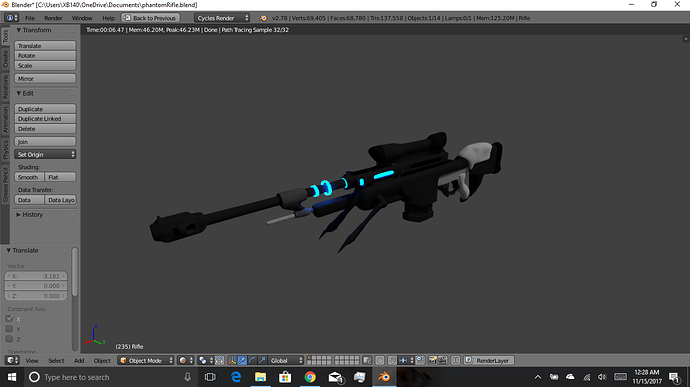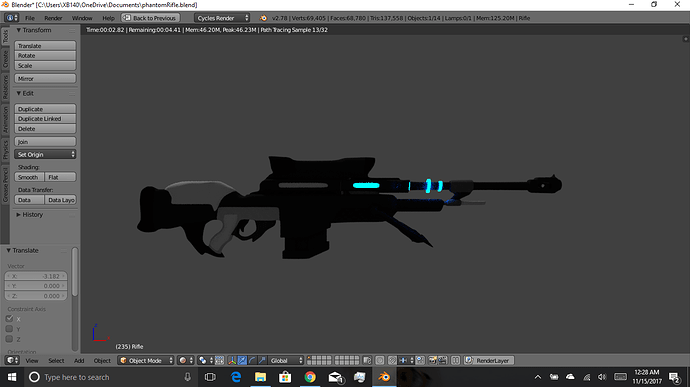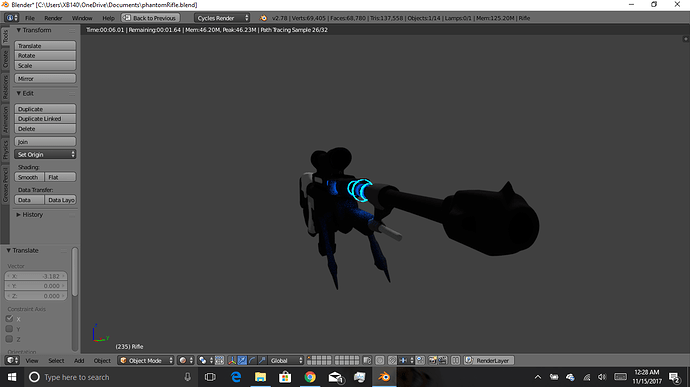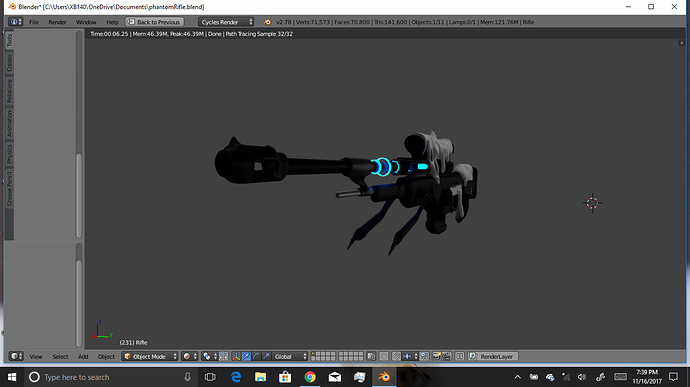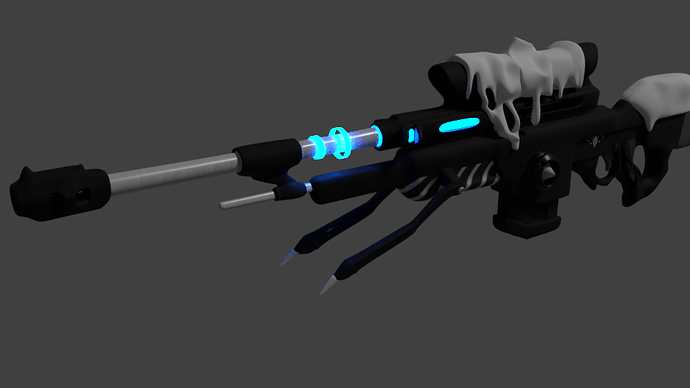Just realized I can see how many verts and faces I have so far. Way more than I thought, but there is a subsurface view:2 modifier on it and I’ve only been working in mirror mode so far.
Guess this is why I gotta use retopos! I just tried posting this series of questions in the forums, but since I’m a new member and my topics have to be approved, I’ll repost it here:
Hi all, I’m new to modeling and I’m working on a large game on my own. I have a couple questions about getting models into a game (I’m working with UE4). I think I can easily figure out how to transfer the weapon over, but I have some questions about workflow leading to that.
Basically, my question is about texturing/materials, baking, and retopology.
I currently have a model made up of multiple objects, each of which I want to have its own reflective values (ie made of individual materials). I’m certain that, overall, I could have a single material/uv map that’s just extremely detailed, but I’m not at that point yet.
I looked at this for some guidance:
I would be using Blender rather than zbrush or topogun, obviously, but my questions are more conceptual anyway.
So right now I have a model with 76k faces, double that for tris - but this is including subsurface view:2 and mirror modifiers. 77k verts as well. Any “sharp” edges I have, I’ve been cutting an edge ring and sliding it to the sharp edge, creating a bunch of doubles. So I think in the non-subsurface model, I can remove doubles and bring those down immensely as well.
Would a potential (good) workflow approach be to dupe my current model, remove the subsurface modifier, remove the doubles, and use that as a good low-poly mesh? Or am I better off committing my modifiers and creating a new one from scratch?
Another major question is, if I were to apply various materials to the different objects in my model, then create a single-object topology and bake it with the individual materials on the hi-poly mesh, could I sort of auto-create a UV map that implies different materials for the low-poly topo? Having different objects is the only way I know to use different materials, but keeping them separate doesn’t seem like it would work for retopologizing.
Also, in that link I posted, the model/render at the bottom appears to reflect light properly (after a few seconds of loading), but the shield still remains flat when looked at from the proper angle. Is this what I should expect with a retopology? Details that are essentially hinted at with reflections and shadows, but aren’t actually there?
Just trying to understand the concepts! Thanks 

